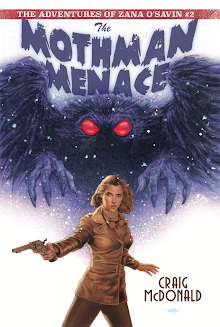Tom Russell’s new album, Folk Hotel, is another stirring recording, mixing spoken word and song.
The opening track, “Up in the Old Hotel,” sets the stakes and
charts the territory ahead as Russell invokes the name of Joseph Mitchell, a
journalist and essayist noted for “his carefully written portraits of eccentrics and people on the fringes of society.
(Tellingly, Mitchell’s collected New Yorker magazine pieces appeared in a volume called—ahem—Up in the Old Hotel.)
This album finds our decidedly bookish and dogged troubadour
(“But you keep on going, ’cause in this, there’s no retirement”) laying down
tracks that could double as short stories and tone poems.
Sticking with his Mitchell-like enduring identification with outsiders—and
his continuing celebration of those dwelling on the fringes of present-day,
sterile society—Russell’s next track, “Leaving El Paso,” is a fine addition to
his La Frontera catalogue of borderland
tunes, this one tracing the singer-songwriter’s migration from the southernmost
edge of Texas to Santa Fe, New Mexico:
“The Rio Grande's gone bone dry, and all the stories have been
told.”
Next comes a touching tribute to Ian Tyson: “It’s ten below
zero; he’s forty miles outside of town…”
“I’ll Never Leave These Old Horses,” lays out Tyson’s daily
ritual of songwriting in tandem with caring for an aging stock of cattle and “five
head of horses.”
“If I sold off and left them, I wouldn’t be much of a man,”
Russell has Tyson declaring, then observing, “after eighty-four years, kid,
it’s too late to second-guess your choices.”
Many Russell records—hell, even entire albums (The Man from God Knows Where, Rose of Roscrae)—intersect with, or celebrate Celtic standards,
airs and themes.
Hotel is no
different, giving us piercing visions of Dylan Thomas, including the song “The
Sparrow of Swansea,” tallying the Welsh poet’s favorite watering holes and
haunts along his doomed-ridden road to a record-setting (and fatal) downing of “18
straight shots of whiskey” in the White Horse Tavern.
“All on a Belfast Morning,” opens with clock tower chimes, then
a recitation by Russell in full bass brogue of Irish writer and actor James H.
Cousins’ poem “High and Low,” before shifting into a ballad that evokes Irish singer-songwriter
Johnny Duhan, singing of buskers and shop girls who “in their sweet young
breasts, the melodies, they’re storing...”
The Irish themes are most overt in a medley opening with
another Russell spoken-word track, “The Day They Dredged the Liffey,” then
moving into “The Banks of Montauk” and “The Road to Santa Fe-O.”
The song “Rise Again, Handsome Johnny” is a jaunty tune
paying tribute to Ireland’s favorite dead American, John Fitzgerald Kennedy.
Sitting dead center in the album are my two most returned-to
tracks.
The first, “Harlan Clancy,” is a Trump-era portrait of a
working-class man in fly-over country (“out here in the middle of Ohio; a place
you’ll never go”) who is left increasingly dismayed by and feeling dislocated
from his native land.
I’ll submit it’s not a reach to hear this one as Russell’s
own “answer song” to his “Who’s Going To Build Your Wall.”
“He said he was sick of the bad news shows, and all the drug
commercials,” Augie Meyers confides in an opening vignette, setting up the first-person
POV ballad that follows from Tom: “I’m Harlan Clancy, I descend from the Irish…
I ain’t no racist, I ain’t no redneck… We keep our nose to the grindstone…”
The most haunting tune for me—the one I seem happily fated
to play to death from this album—is one Russell has described as a song written
in a “Townes Van Zandtian dream state.”
"The Last Time I Saw Hank" is a powerful meditation on last moments glimpsed of musical idols, saviors and most wrenchingly, of parents.
The sometimes beautifully surreal words are set against one of Russell's most piercing and haunting melodies:
"The last time I saw my mother, someone put a rose on her forehead/Was this miracle or mockery?"
More than two dozen albums in, Russell seems to somehow go deeper and grab tighter and more urgently with each new work. In a run of exceptional records spanning decades, this one is, what Russell's fellow Angelino James Ellroy might term, Tom's "latest classic."
—Craig McDonald
Oct. 7, 2017
Reynoldsburg, Ohio (a place you'll never go)
Buy it from official store here











































